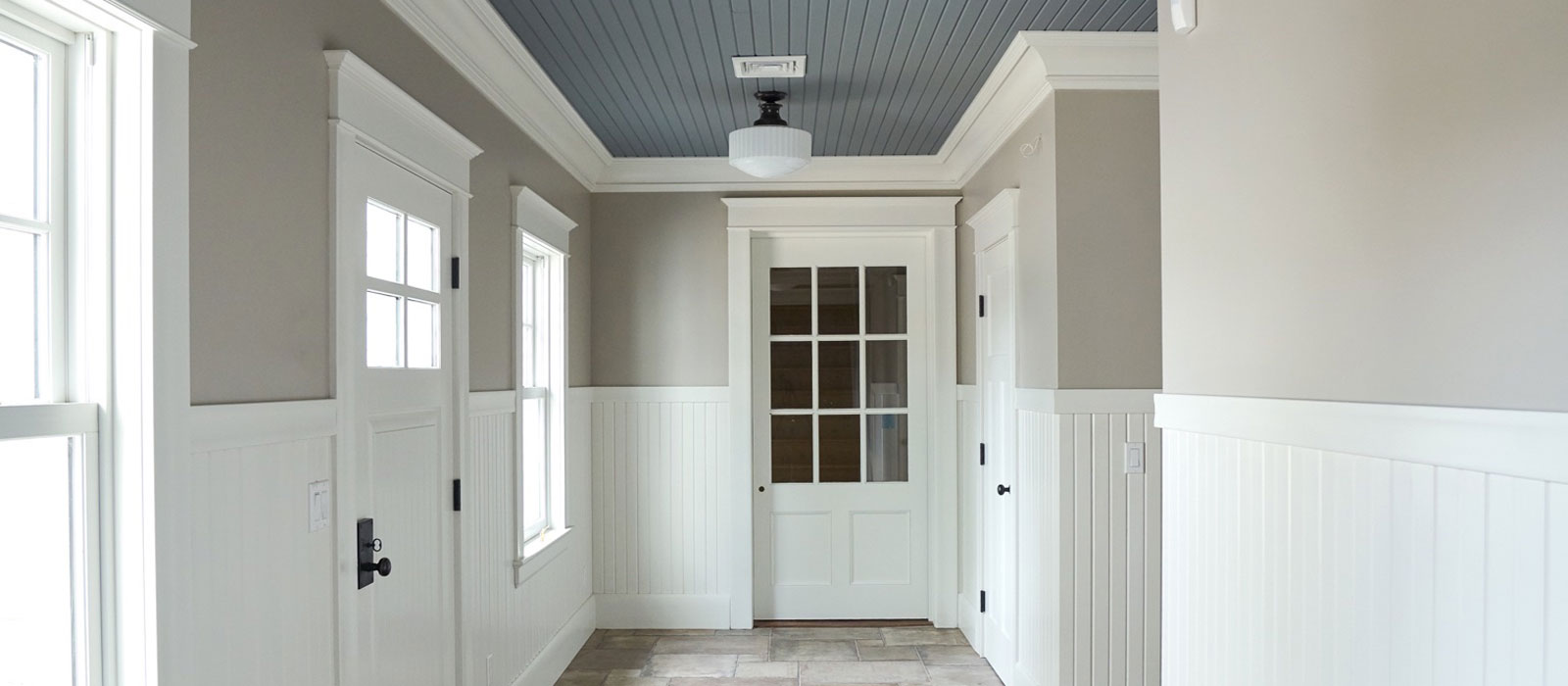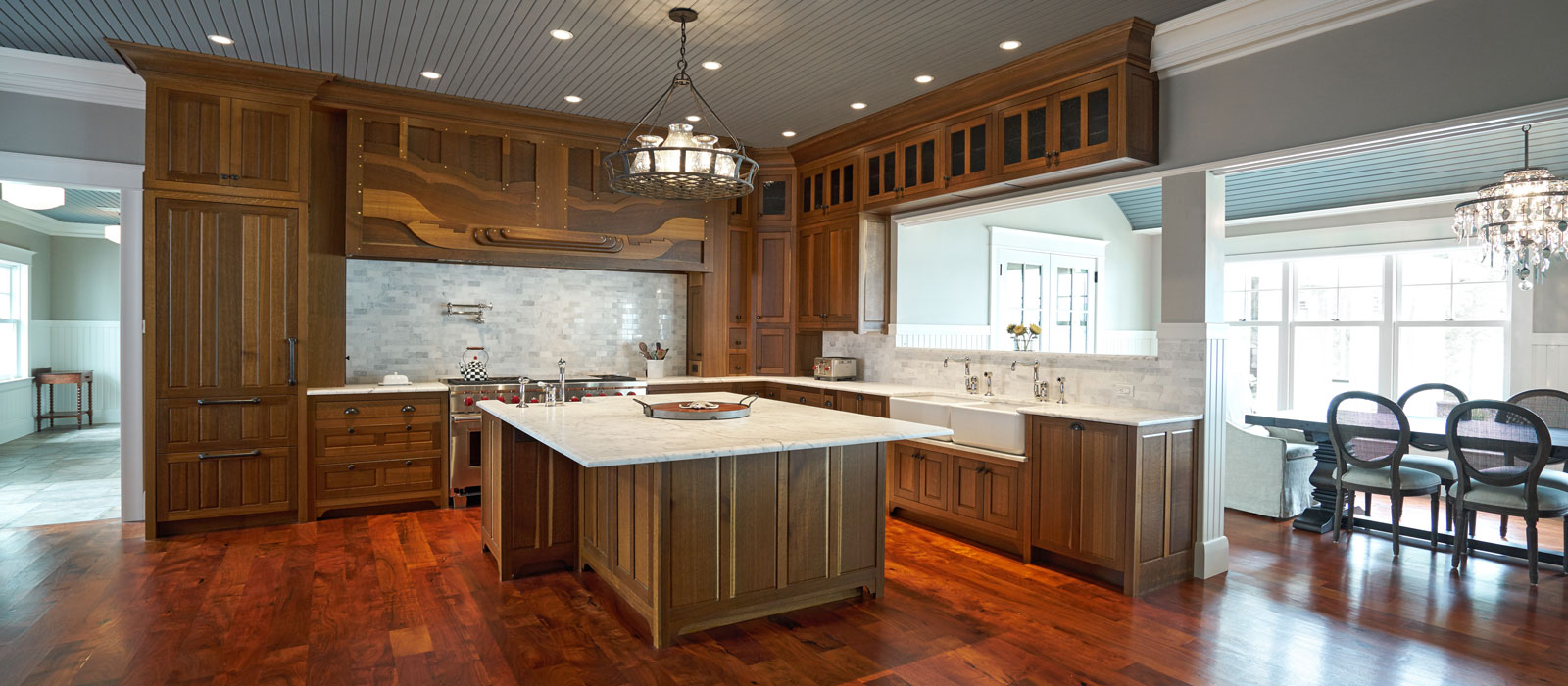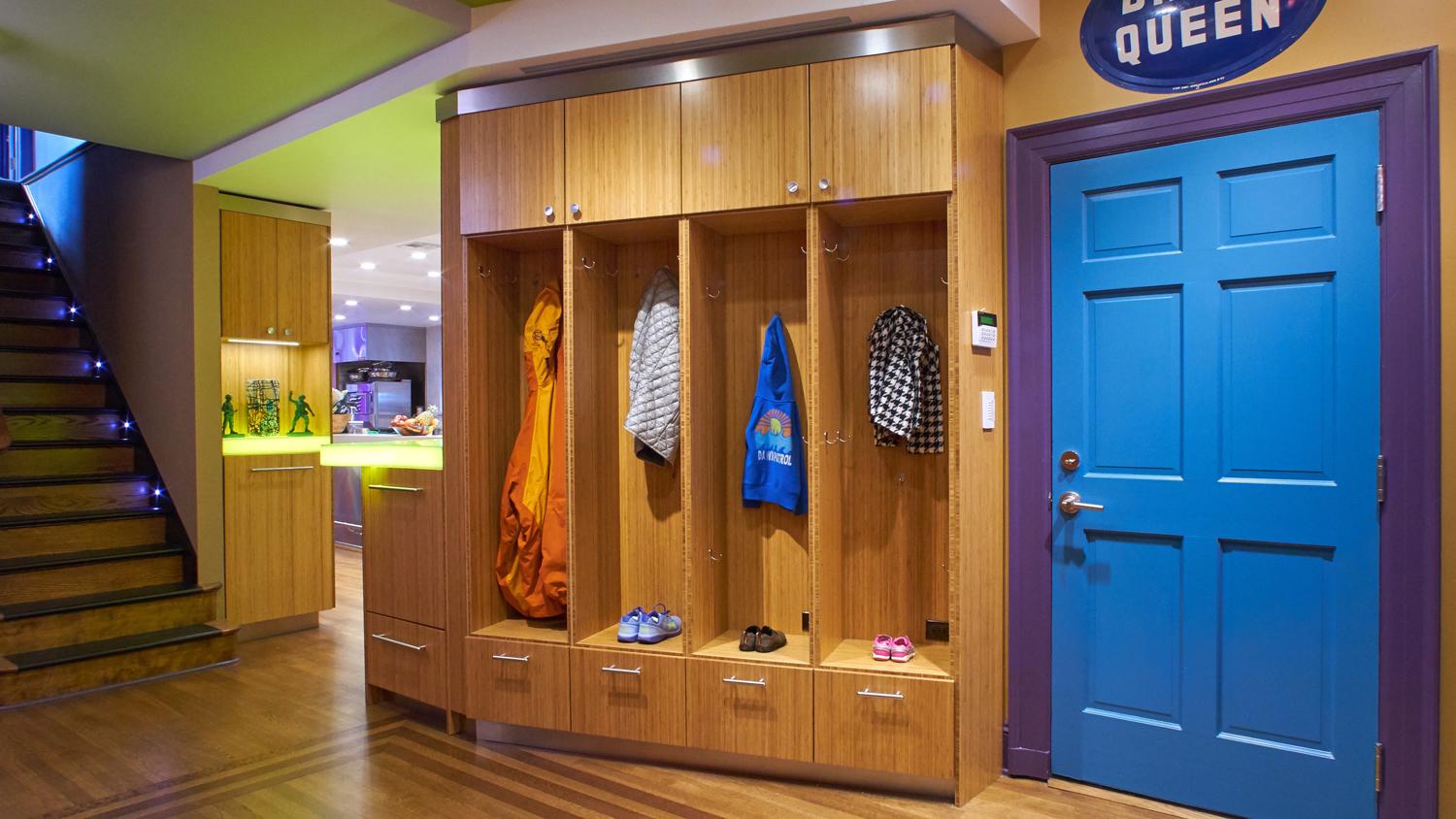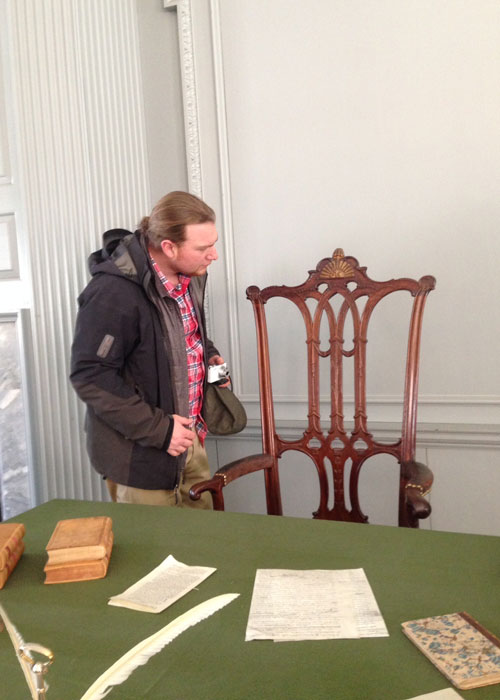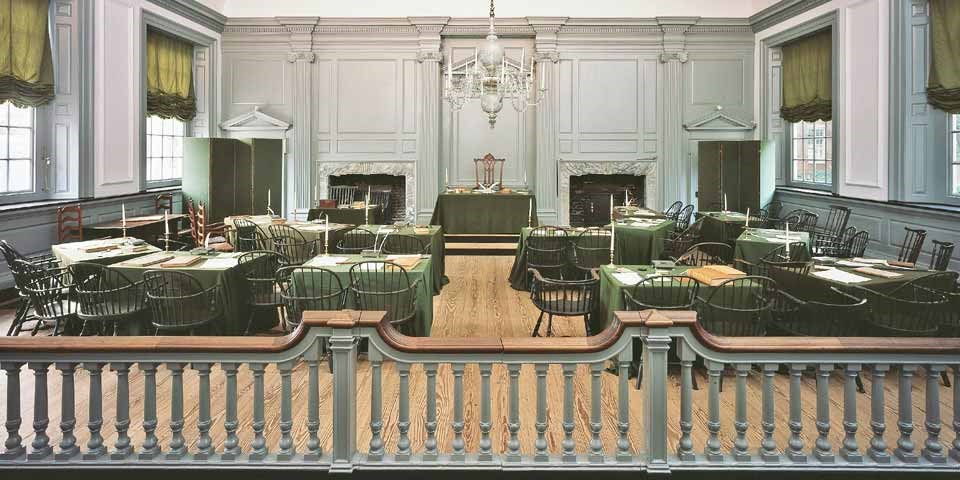The Rising Sun chair is one of the most iconic furniture pieces from Revolutionary America. The very seat Geroge Washington sat in as he signed the Constitution. Follow along as we craft a reproduction of this historic piece.
![]()
The American Chippendale
Cabinetmaker John Folwell, sometimes known as the American Chippendale, was a Philadelphia cabinetmaker active during the time leading up to and following the Revolutionary War (Pile 2014, p. 244). In 1775 Folwell submitted a proposal to publish an American Edition of the Gentlemen's and Cabinet-maker's Director that would feature new, distinctly Colonial American Furniture designs (81). He was never able to see his ideas come to fruition, by 1976 war had broken out in the colonies quickly putting an end to his plans
The Sun Rises on a New Nation
In 1779, to show his support for the newly formed country John Folwell provided the Pennsylvania Assembly with a chair for a Legislature's speaker. The Rising Sun Chair, as it became known, replaced the chair used by John Hancock during the drafting of the Declaration of Independence. The British likely destroyed the original speaker's chair, Hancock's chair, during their occupation of Philadelphia (1777-78).
The Rising Sun Chair was Geroge Washington's seat during the Constitutional Convention (1787) held at the Pennsylvania state house (now Independence Hall ) in Philadelphia. The chair was named following an observation made by Benjamin Franklin while watching the signing of the Constitution. Franklin remarked to those near him:
I have often and often in the course of the Session, and the vicissitudes of my hopes and fears as to its issue, looked at that behind the President without being able to tell whether it was rising or setting: but now at length I have the happiness to know that it is a rising and, not a setting Sun.
The chair continued to function as the Pennsylvania speaker's chair, moving along with the State Capital, first to Lancaster, then to Harrisburg. It was eventually returned to Independence Hall in 1872 in anticipation fo the Nation's 1876 centennial celebration.
Understanding a Piece of History
Commissioned by a private collector to build a reproduction of this iconic American chair, Vincent Chicone traveled to Philadelphia in the spring of 2014 to examine both the original 18th-century piece as well as a reproduction, both curated in the collections of Independence Hall. The trip included time with the Chief Curator of Independence National Historical Park, Karie Diethorn, a wealth of knowledge about the construction and history of this iconic piece.
Templating
We began the project by crafting a series of templates including ones for the back splat, crest rail, front and back legs, and the arms. These parts of the chair are indicated in the illustration below.
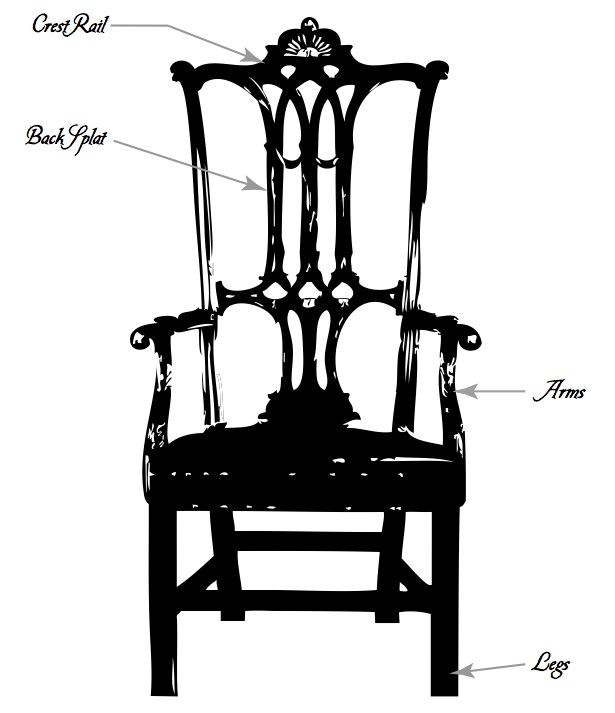
Back Splat
We sketched out the design of the carved back splat and transferred it to the template
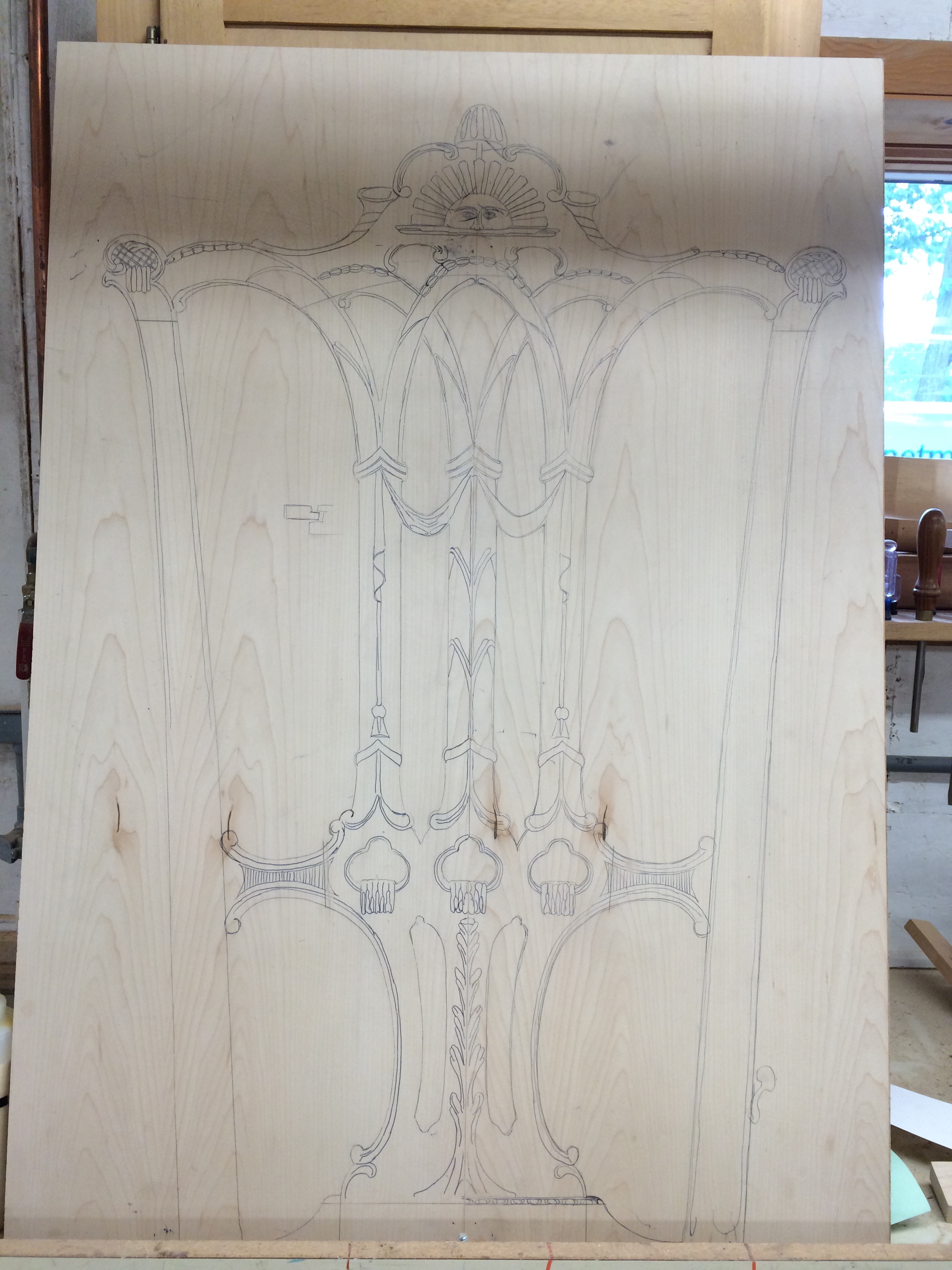
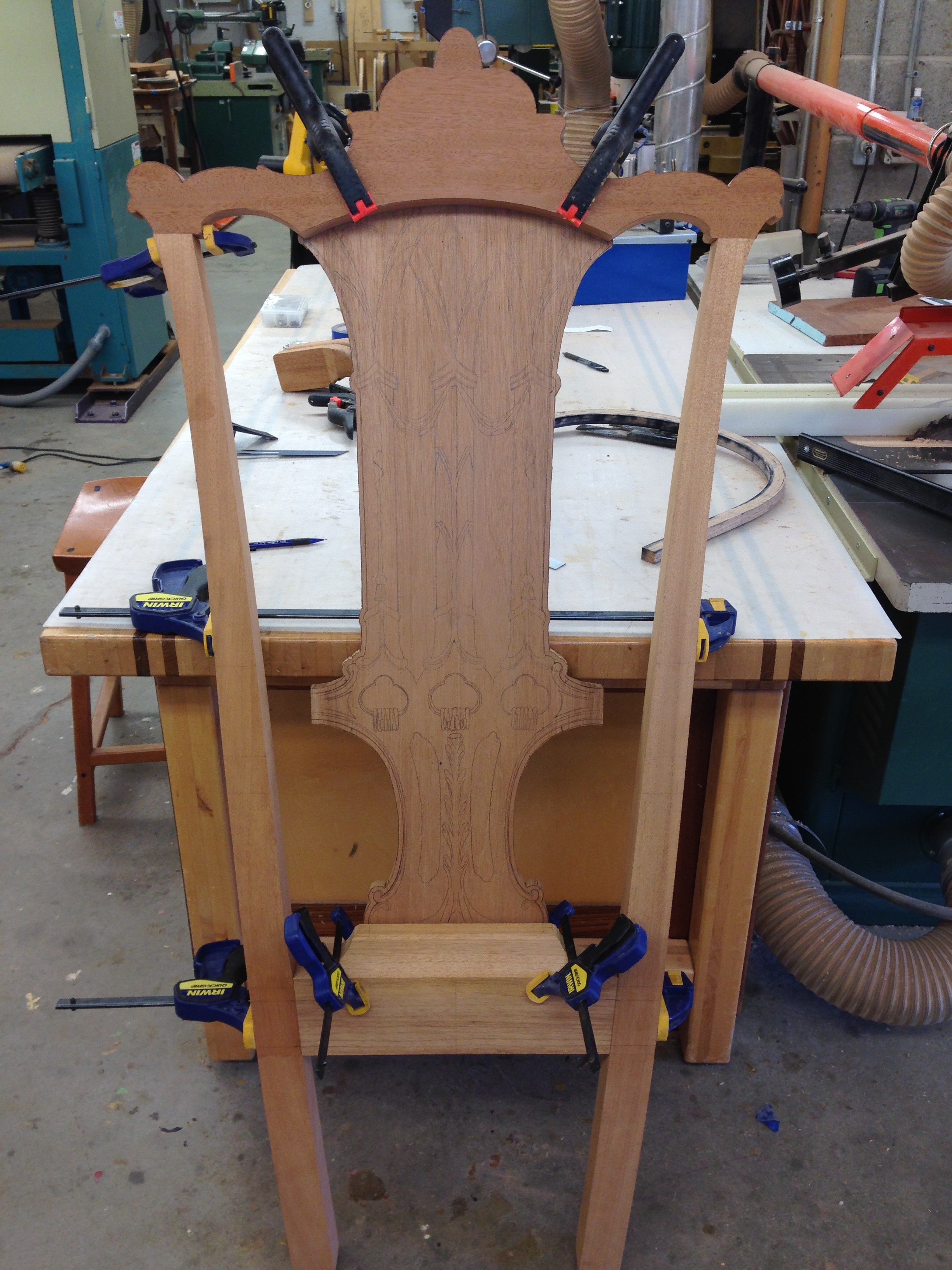
Arms
We hand shaped the arms with a rasp and a file, then sketched out the carved feather design in pencil.
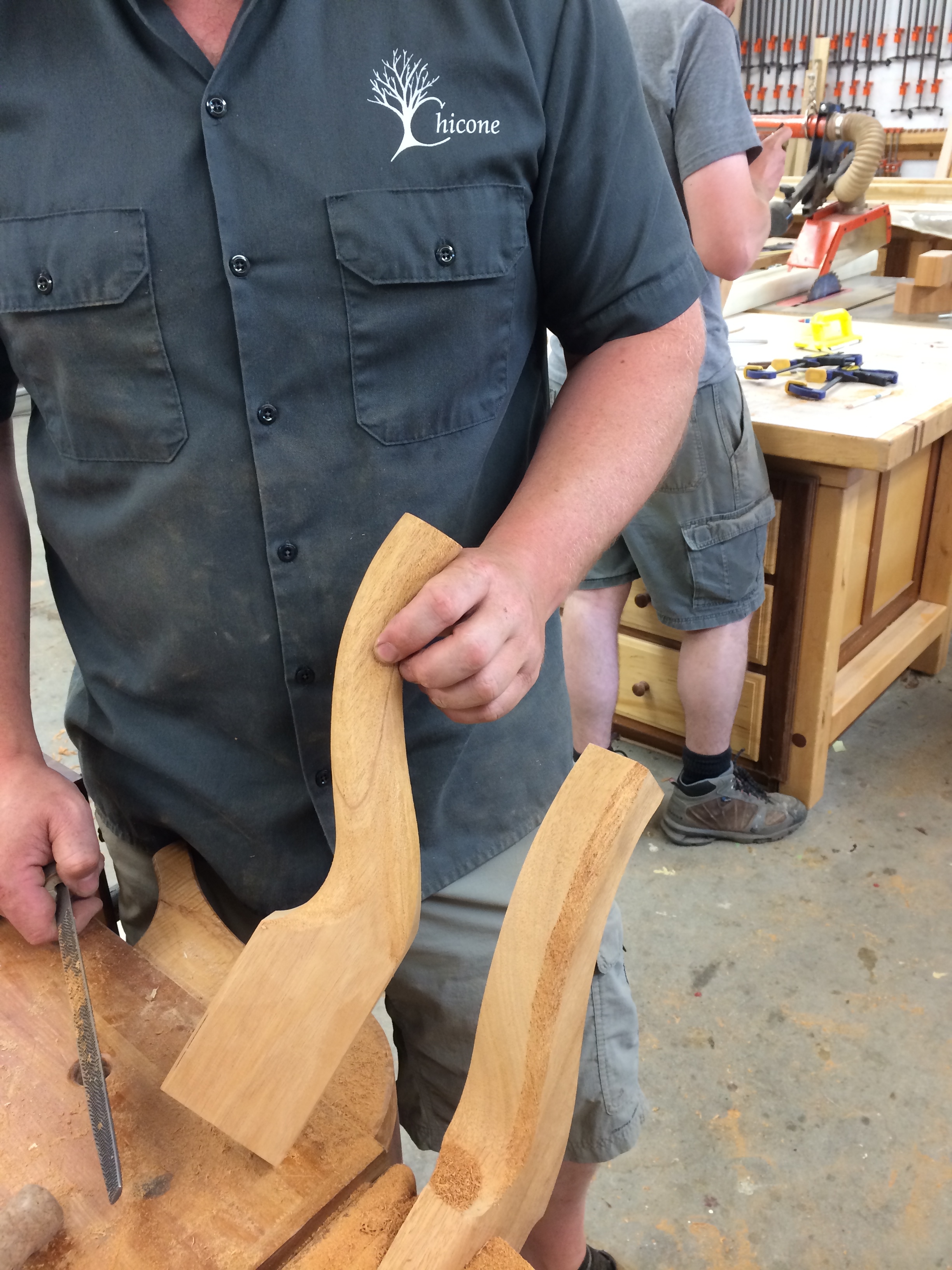
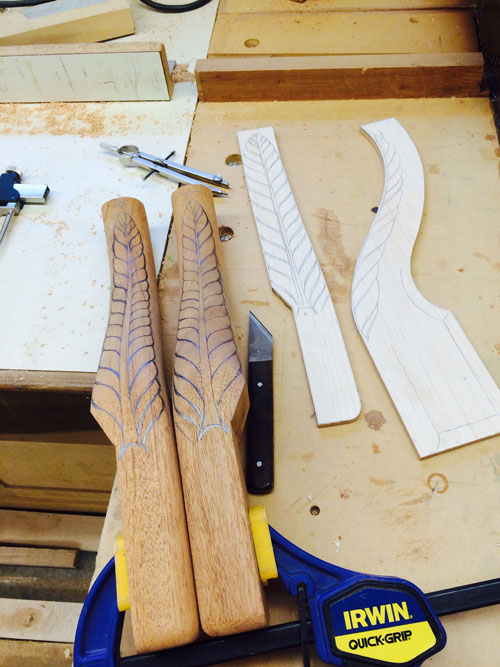
Legs
Templates were made for the complex angles of the legs. These were used to sculpt the legs with compass hand planes and files.
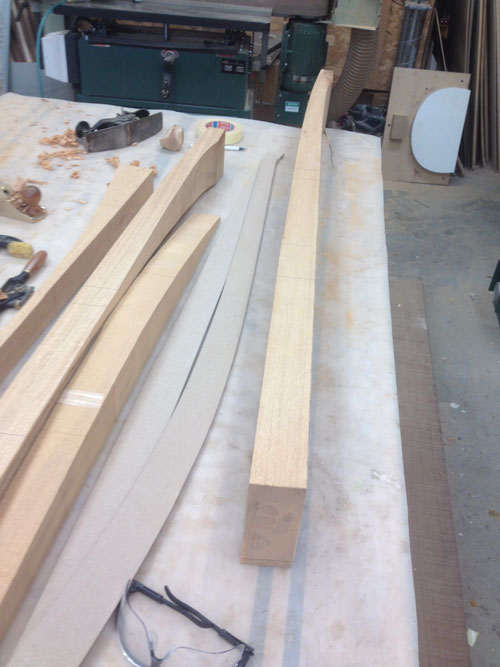
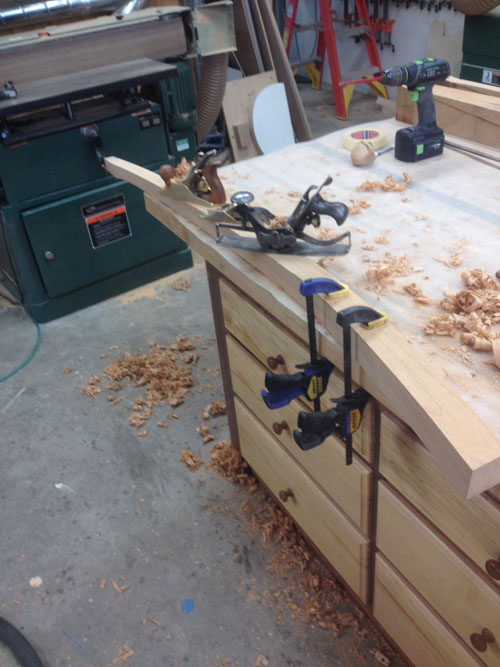
Carving
Templates were used to craft the final back splat, crest rail, arms, and legs. We then set about hand carving Folwell's designs into the mahogany pieces.
![]()
Once we drew out the design we used a number 3 and 4 h=gouge to "let down" the backdrop by a 1/16 of an inch. This leaves the carved pieces in relief for shaping and detail (see image).
![]()
Using images of the original chair we set out to add details to the chair's iconographic carvings. These include the rising sun (the chair's namesake) and just above a cap and pole or liberty pole, a staff topped with a Phrygian cap. The liberty pole and cap were a common symbol of freedom during the American Revolution and can still be seen today on both the New York and New Jersey State flags, as well as the official seals of the United States Army and the United State's Senate among others.
Cornucopias flank the sun, often used to symbolize abundance and fertility, they are perhaps projecting Folwell's wishes for the new country and the State of Pennsylvania. In a nod to rebirth, or possibly recognizing the state's agricultural abundance, wheat rises up the back splat to the crest rail.
C-scrolls, a common element of Rococo design popular in Europe in the mid-18th century, grace the ear of the crest rail embracing a fine check pattern (see image below).
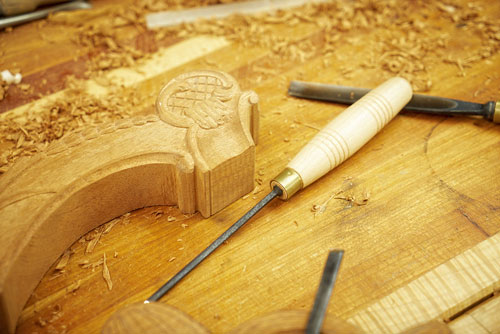
Back Splat
The back splat includes a series of motifs including more C-scrolls, drapes, wheat, and acanthus leaves, which were often used to symbolize enduring life. The image below shows the backdrop reduced 1/16 of an inch bringing the details in relief.
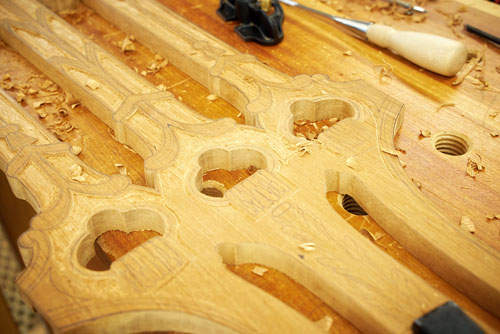
The Finished Piece
Handcrafting a piece of furniture like the Rising Sun Chair is a labor of love. The templating, carving, finishing, assembly, and great attention to detail forges an intimate relationship between the craftsman and the piece. It is always bittersweet to say goodbye to what we have invested so much of ourselves in. But we send it off with pride and with the satisfaction that only comes with crafting such an iconic embodiment of American history with our own hands. You can see more images of the finished chair Here:
![]()

